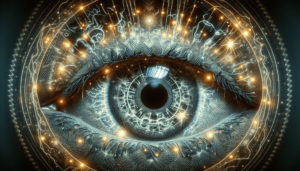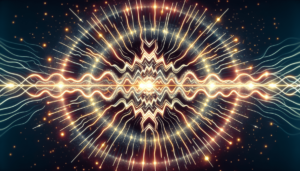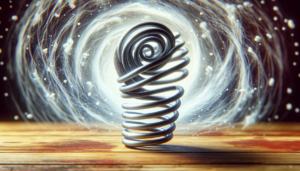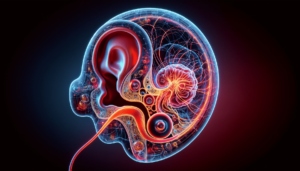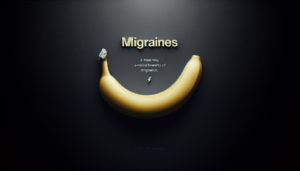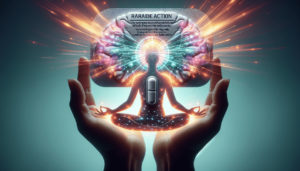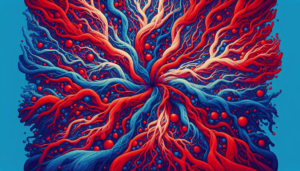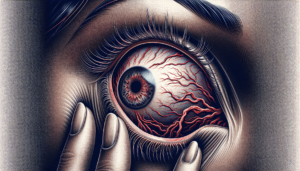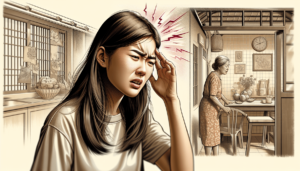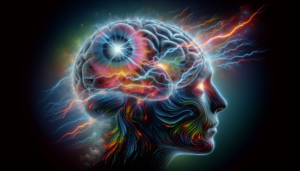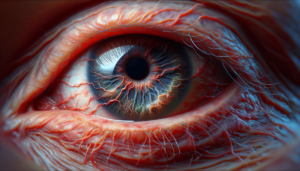Do migraines come and go? If you’ve ever experienced the debilitating pain and discomfort of a migraine, you might have wondered about the unpredictable nature of these headaches. It’s a common query among those who suffer from migraines, and rightfully so. In this article, we will explore the cyclical nature of migraines and shed light on why they seem to come and go in a seemingly random fashion. Whether you’re looking for answers or just curious about the mysterious world of migraines, join us on this journey to uncover the truth behind these elusive headaches.
Definition of Migraines
Migraines are intense headaches that can be debilitating and have a significant impact on your daily life. They are often characterized by throbbing or pulsating pain, usually on one side of the head. Migraines are a neurological condition that can last anywhere from a few hours to several days. They are often accompanied by other symptoms such as nausea, vomiting, and sensitivity to light and sound.
Migraine Symptoms
Migraine symptoms can vary from person to person, but there are some common signs to look out for. The most prominent symptom is a severe headache that is often described as a pounding or throbbing pain. This pain is usually on one side of the head, but it can also be bilateral. Other symptoms may include nausea, vomiting, dizziness, and sensitivity to light and sound. Some people may also experience an aura, which is a visual disturbance that can include flashing lights or blind spots.
Different Stages of a Migraine Episode
Migraine episodes often have different stages, each with its own set of symptoms. The prodrome stage can occur hours or even days before a headache begins and is characterized by subtle changes in mood, appetite, or energy levels. The aura stage, which not everyone experiences, involves sensory disturbances such as visual changes or tingling in the face or hands. The headache itself is the most intense phase, where the pain is at its peak. Finally, there is the postdrome stage, also known as the migraine hangover, where you may feel exhausted or have difficulty concentrating.
Frequency of Migraines
Migraines can occur sporadically or on a more regular basis. Understanding the frequency of your migraines can help you manage them effectively.
Occasional Migraines
Some people experience migraines occasionally, with attacks happening less than 15 days per month. These episodic migraines may be triggered by specific factors and may not significantly impact daily life. However, even occasional migraines can cause significant discomfort and should not be ignored.
Chronic Migraines
Chronic migraines are diagnosed when a person experiences migraines for more than 15 days per month for at least three months. These headaches can be more difficult to manage and can have a severe impact on daily activities. If you are experiencing chronic migraines, it is important to seek medical attention to develop an effective treatment plan.
Episodic Migraines
Episodic migraines fall between occasional migraines and chronic migraines. They occur between 4 and 14 days per month. While less frequent than chronic migraines, they can still be quite disruptive. Identifying triggers and employing appropriate management techniques can help reduce the frequency of episodic migraines.
Triggers and Causes
Migraines can be triggered by a variety of factors, and understanding these triggers can help you prevent or manage your migraines.
Environmental Triggers
Certain environmental factors can trigger migraines. These may include bright lights, loud noises, strong smells, or changes in weather. It is important to pay attention to your surroundings and identify any triggers that may be contributing to your migraines.
Genetic Factors
There may be a genetic component to migraines, as they tend to run in families. If you have a family history of migraines, you may be more prone to experiencing them yourself. Genetic factors can influence the frequency, severity, and triggers of migraines.
Hormonal Changes
Hormonal changes, particularly in women, can trigger migraines. Fluctuations in estrogen levels, such as those that occur during menstruation, pregnancy, or menopause, can make some individuals more susceptible to migraines. Keeping track of hormonal patterns and working with a healthcare professional to manage these fluctuations can be helpful in preventing migraines.
Dietary Triggers
Certain foods and drinks can trigger migraines in some individuals. Common dietary triggers include caffeine, alcohol, processed foods, aged cheeses, and artificial sweeteners. Keeping a food diary and identifying any patterns between your diet and migraine attacks can help you avoid these triggers.
Symptoms of Migraine Attacks
Migraine attacks are often characterized by more than just a severe headache. Understanding the full range of symptoms can help you recognize and manage migraines more effectively.
Pain and Severity
The pain experienced during a migraine attack is often throbbing or pulsating and can be moderate to severe in intensity. It is typically localized to one side of the head, but it can also occur on both sides. The pain can be debilitating and can worsen with physical activity.
Aura and Sensory Disturbances
Some individuals may experience an aura before or during a migraine attack. Auras are usually visual disturbances, such as seeing flashing lights or zigzag lines. However, they can also involve other sensory disturbances, such as tingling in the face or hands. Auras typically last for about 20 minutes to an hour and are followed by the onset of a headache.
Nausea and Vomiting
Nausea and vomiting are common symptoms associated with migraines. These gastrointestinal symptoms can make it even more challenging to manage a migraine attack. It is important to stay hydrated and rest during this time to help alleviate these symptoms.
Sensitivity to Light and Sound
During a migraine attack, individuals may become hypersensitive to light and sound. Even normal levels of light or sound can be unbearable, further exacerbating the pain and discomfort associated with migraines. Creating a quiet and dark environment can help provide relief during a migraine attack.
Duration of Migraine Attacks
Migraines can vary in duration, and understanding the different durations can help you anticipate and manage them more effectively.
Migraines That Come and Go Within a Day
Some migraines can last for only a few hours, while others may resolve within a day. These migraines can be less severe and may respond well to over-the-counter pain medications or rest.
Migraines That Last for Several Days
Other migraines can last for several days, causing more prolonged discomfort. These migraines may require stronger prescription medications or other interventions to manage the symptoms effectively.
Chronic Migraines That Persist for Weeks
Chronic migraines can persist for weeks or even longer without relief. These migraines can significantly impact your daily life and may require a more comprehensive treatment plan, including preventive medications and lifestyle modifications.
Migraine Variants and Associated Conditions
There are several different types of migraines and associated conditions, each with its own unique set of symptoms.
Vestibular Migraines
Vestibular migraines are characterized by dizziness and problems with balance. Individuals may experience vertigo or a spinning sensation during a vestibular migraine attack. These migraines can be particularly debilitating, as they can interfere with everyday activities and make it challenging to maintain balance.
Ocular Migraines
Ocular migraines, also known as retinal migraines, involve temporary vision loss or visual disturbances in one eye. These visual disturbances can range from flashing lights to partial or total blindness in one eye. Ocular migraines typically resolve within a short period, but they can be alarming and should be evaluated by a healthcare professional to rule out any underlying conditions.
Menstrual Migraines
Some individuals may experience migraines that are specifically triggered by hormonal changes during their menstrual cycle. These migraines tend to occur before, during, or after menstruation and are often more severe compared to other types of migraines. Tracking your menstrual cycle and discussing any patterns with your healthcare provider can help in managing menstrual migraines.
Chronic Daily Headaches
Chronic daily headaches are headaches that occur for at least 15 days per month for at least three months. These headaches can have migrainous features and can significantly impact daily life. Identifying and addressing the underlying causes of chronic daily headaches is crucial in effectively managing these headaches.
Managing Migraines
Managing migraines often involves a combination of lifestyle changes, medical interventions, and alternative therapies. Finding what works best for you may require some trial and error, but with persistence, you can find relief.
Identifying Triggers and Avoiding Them
One of the most effective ways to manage migraines is to identify and avoid triggers. Keeping a headache diary can help you track potential triggers, such as certain foods, environmental factors, or hormonal fluctuations. Once you have identified your triggers, you can take steps to avoid or minimize exposure to them.
Medications for Relieving Symptoms
There are various medications available to help relieve the symptoms of migraines. Over-the-counter analgesics, such as acetaminophen or ibuprofen, can be effective for mild to moderate migraines. For more severe migraines, prescription medications, such as triptans or ergotamine, may be necessary. It is important to work with your healthcare provider to find the right medication and dosage for you.
Lifestyle Changes and Stress Management
Making certain lifestyle changes can also help manage migraines. These may include maintaining a regular sleep schedule, regular exercise, managing stress through relaxation techniques or therapy, and eating a healthy diet. Adopting a healthy lifestyle can often reduce the frequency and severity of migraines.
Alternative Therapies
In addition to traditional medical approaches, alternative therapies can also be helpful in managing migraines. These may include acupuncture, biofeedback, massage therapy, or herbal supplements. It is important to discuss these options with your healthcare provider to ensure their safety and efficacy.
When to Seek Medical Help
While most migraines can be managed at home, there are certain situations where it is important to seek medical help.
Frequent and Severe Migraines
If your migraines occur frequently, are particularly severe, or are not responding to over-the-counter medications, it is important to seek medical attention. Your healthcare provider can help determine the underlying cause and develop an appropriate treatment plan.
Sudden Changes in Migraine Patterns
If you suddenly experience a change in your migraine patterns, such as an increase in frequency or severity, it is important to consult with your healthcare provider. Sudden changes in migraine patterns can indicate an underlying medical condition that requires further evaluation.
Presence of Other Concerning Symptoms
If you experience other concerning symptoms during a migraine attack, such as weakness, difficulty speaking, or confusion, it is important to seek emergency medical attention immediately. These symptoms could indicate a more serious condition, such as a stroke.
Preventing Migraines
Prevention is an essential aspect of managing migraines. While it may not be possible to completely eliminate migraines, there are steps you can take to reduce their frequency and severity.
Preventive Medications
For individuals with chronic or frequent migraines, preventive medications may be prescribed. These medications are taken regularly to reduce the frequency and severity of migraines. Common preventive medications include beta-blockers, antidepressants, and anti-seizure medications. It is important to work with your healthcare provider to find the right preventive medication for your specific needs.
Identifying and Managing Triggers
As mentioned earlier, identifying and avoiding triggers can help prevent migraines. By keeping a headache diary and paying attention to your environment and lifestyle, you can better understand your triggers and take steps to minimize their impact on your migraines.
Regular Sleep Patterns and Hydration
Maintaining a regular sleep schedule and ensuring adequate hydration can also help prevent migraines. Lack of sleep or dehydration can trigger migraines in some individuals, so it is important to prioritize healthy sleep habits and drink enough water throughout the day.
Stress Reduction Techniques
Stress is a common trigger for migraines, so finding effective stress reduction techniques can be helpful in preventing migraines. Engaging in activities such as deep breathing exercises, meditation, yoga, or engaging in hobbies can help reduce stress levels and minimize the risk of migraines.
Conclusion
Migraines are a complex and often challenging condition to manage. Understanding the different symptoms, triggers, and treatment options is essential in finding relief. By working closely with your healthcare provider, identifying triggers, and adopting healthy lifestyle practices, you can better manage your migraines and improve your quality of life. Remember, if your migraines are frequent, severe, or accompanied by concerning symptoms, it is important to seek medical attention for a proper evaluation and treatment plan. With proper management, migraines can be effectively controlled, allowing you to live a more fulfilling and pain-free life.



